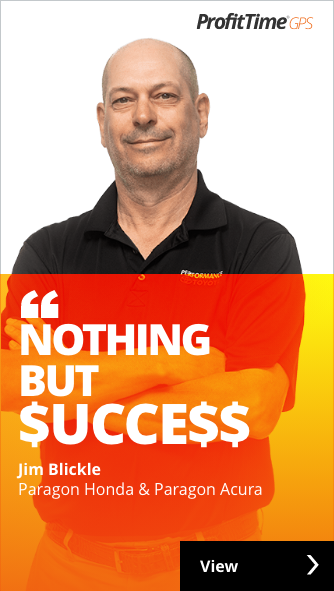3 Areas Of New Vehicle Performance Improvement For 2017
When the temps hit single digits in Chicago, I start thinking about places where it’s a whole lot warmer and more pleasant.
This daydreaming led me to think about sunny beaches, and the big wave of success dealers have been riding in new vehicles in recent years. Actually, it’s more like a consistent swell, with successive sets of waves, and everybody enjoying the ride.
You have to go back 100 years to find the kind of consecutive, year-over-year increases in new vehicle sales that our industry has enjoyed the past eight years.
But as I look ahead to 2017, it appears highly unlikely that the wave will get any bigger.
It’s taking seemingly super-size incentives and fleet units to keep the pace of new vehicle sales this year on par with sales a year ago. Dealer inventories are growing. Factories know they need to (or at least should) better align production mixes and levels to current demand. On top of all that, the Federal Reserve this week nudged up its benchmark interest rate, and news reports suggest they’ll do so again more than once in the coming year. Oh, and, of course, new car margins continue to shrink.
The bottom line is that I suspect we’ll be in for a year where it won’t be as easy for dealers to achieve year-over-year growth in new vehicle sales and profits.
But here’s the good news. There is opportunity for dealers who choose to work smarter, and to work more diligently to make their new vehicle operations reflect current market conditions and run more efficiently. The opportunity rests in three key areas:
- Factory orders: It’s safe to say most dealers are less than scientific when they order vehicles from the factory. They aren’t using tools to assess the Market Days Supply of specific models and trim configurations, and compare these insights to current units in stock. They order based on what they think will work best for their market and, to an increasing degree, to get factory reps off their backs. The end result is a consistently less-than-optimal product mix, and sizable percentages of aged units.
- Pricing: In used vehicles, dealers have become extremely vigilant about ensuring that each car online includes a price, and making price adjustments that reflect current market conditions and a vehicle’s time in inventory. In new vehicles, there’s a lot of room for improvement. It’s not uncommon to see 15 percent to 20 percent of a dealer’s new vehicles posted online without a price, and a significant share of the same models all priced exactly the same, irrespective of specific trim-level features or the day they arrived from the factory. When today’s transparency-minded buyers can’t find a price, or these see a same-same pricing standard, it diminishes rather than enhances their interest.
- Inventory investment velocity: When you combine optimized factory orders with age-/market-based pricing, you set the stage for selling more vehicles faster, and increasing the “total” return on investment you make in each new vehicle. Today, it’s not uncommon to see as much as 40 percent of a dealer’s new vehicle inventory older than 90 days—a level of investment inefficiency that will become increasingly painful and problematic as demand softens in the coming year.
I’ve talked to several dealers recently who plan to make improved new vehicle performance a priority as they attend next month’s National Automobile Dealers Association (NADA) convention in New Orleans.
They understand the big wave of new vehicle sales is breaking, and they’re looking for ways to ride out the remainder with more efficiency, grace and speed than their competition.
The post 3 Areas Of New Vehicle Performance Improvement For 2017 appeared first on Dale Pollak.

















